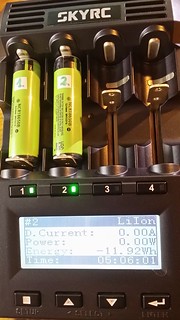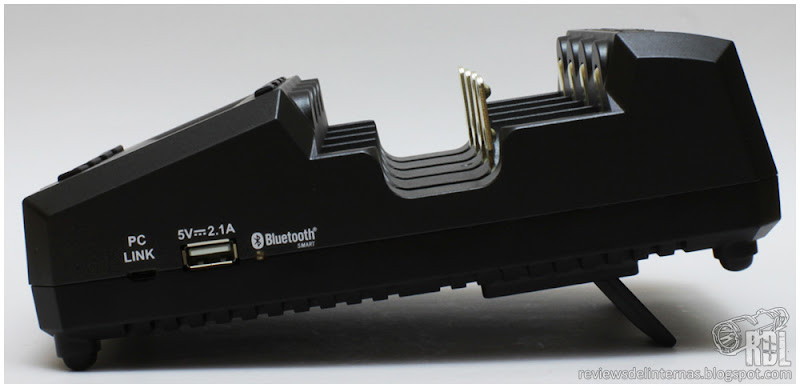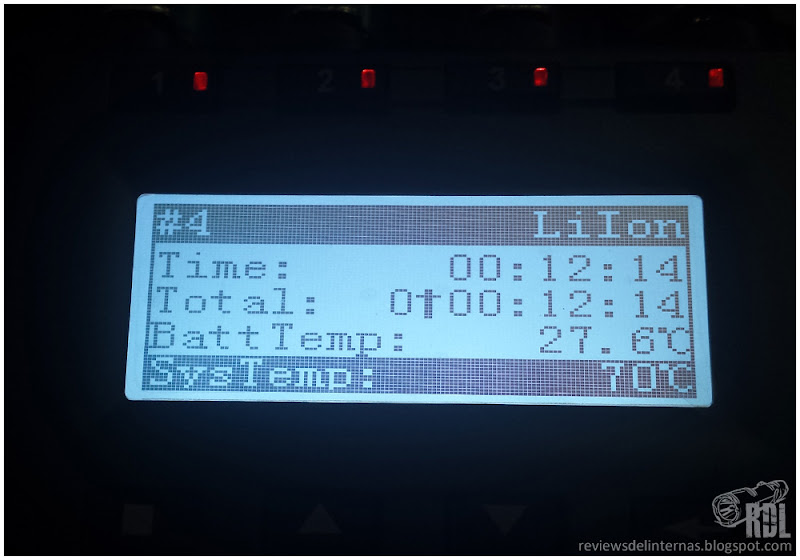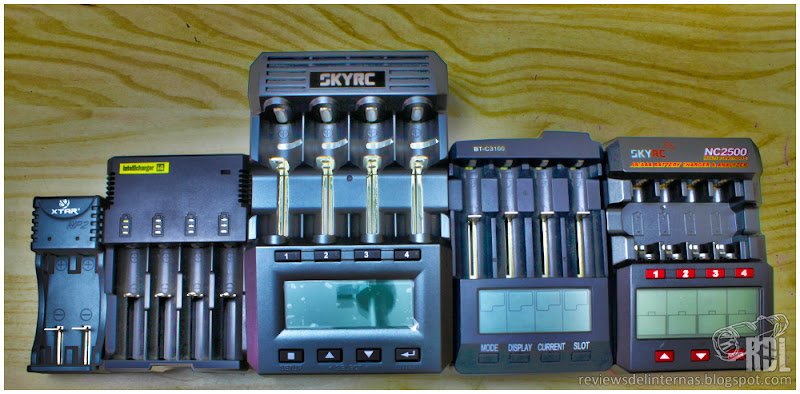kreisl escribió:Today i quick-tested my new (=unused) Protected NCR18650B Seiko Gold Plated, datecode
2014-09-27, just to check the calibration level of my unit. I had calibrated my charger a month ago after my UT61E digital multimeter, so the mc3k capacity readings would equal exactly what my DMM would read.
Today i am happy to share my test results in form of photo proof, because at some point the PCLS stopped logging (or the device stopped sending data to the PC). This happened on my system before, and who knows which part to blame (bug in: PCLS, mc3k, or WinXP?). Maybe DEX would not have exhibited the same unfortunate behavior. I'll eventually find out under which circumstances that 'stopped logging' occurs. So long, back on topic.
First off, the 2-3 similar datasheet PDF's (~4 pages) for NCR18650B which are floating on the internet are obviously not the full datasheets. It is instructive to study the complete information given in NCR18650GA full datasheet pdf (
16 pages!) and compare it with the ~4 pages of our NCR18650B. I'll do that in some future post. The NCR18650B pdf does specify the most relevant points for today's test:
We learn that Panasonic distinguishes between 4 different 'capacity names' and that the term 'Nominal Capacity' can be just anything and does not need to correspond to any of the 3 other capacity names. Basically 'Nominal Capacity', in the widest sense, can be any freely chosen number which the marketing department opts to just print on the label. If UltraFire releases a 18650 on ebay with the name "UF18650 6000mAh", then per definitionem the nominal capacity of that UF battery
is 6000mAh. This label (=name) does not say anything about the battery's actual rating (Rated Capacity at temperatureA), Minimum Capacity (at temperatureB), nor Typical Capacity (at temperatureB). We all know, the nominal capacity of NCR18650B
is 3400mAh, no matter how a datasheet pdf redefines the term locally for the purpose of the very pdf. More important for us to know is how the manufacturer defines the "C" (as in 1C, 2C, 0.2C, etc). C is, in fact, defined differently, depending on the manufacturer and depending on the battery model. C can be defined as the Rated, Minimum, Typical, or Nominal Capacity, or else. After studying the pdf's of NCR18650GA and NCR18650B, the reader comes to the conclusion that in both cases Panasonic defines C as the Minimum Capacity. C=3350mAh for NCR18650GA, and C=3250mAh for NCR18650B. Knowing C is important, if the reader wants to understand the full contents of the pdf's. For example, in the NCR18650B pdf, there are 4 discharge curves labeled as "0.2CA 0.5CA 1CA 2CA". In order to translate these figures into amperages, one must know the value of "CA" (which is our C).
"0.2CA" translates to "C/5" or "3250mA/5" = 650mA = 0.65A (CC discharge)
Charge current was given as "1.625A". That corresponds to 0.5C or C/2.
Charge termination current was given as "65.0mA". How come? Because that's 1/50 or 2% of our C (C/50 = 3250mA/50 = 65mA), or that's 1/25 of our initial charging current (1/25 *1.625A = 0.065A = 65mA), depending on how you wanna see it. What matters is that after every discharge run the battery must be recharged with the same parameters:
0.5C charge, CC-CV, termination at
1/25 of the 0.5C, which means a very low termination current of 65mA.
The NCR18650GA pdf also states something about the charging duration ("4.0hrs") and the discharging duration ("Criteria: More than 300 min."). Interesting.
So with the above (
blue) parameters entered in the mc3k (CYCLE C>D, N=1), we should expect the Typical Capacity, 3350mAh (or at least 3250mAh if all failed on us thus far), if the cells were factory fresh and my room had a temperature of 25°C. Well, my cells are over 15 months old ex factory, yet unused ("Like New"), and my room is
21…22°C cold. Impossible to reach 3350mAh in such a colder environment. Absolutely impossible to reach 3400mAh, because that's just a label by the marketing department. And that's what i got as discharge test result for the first 2 cells ("B1 and B2"), B1 in #1, B2 in #2:
#1: B1 -3326mAh -11.97Wh in 307min5sec
#2: B2 -3315mAh -11.92Wh in 306min1sec
rough check for #1: (307*60+5)/3600 *650 = 3326.7361111…mAh, CHECK OK!
rough check for #2: (306*60+1)/3600 *650 = 3315.1805555…mAh, CHECK OK!
impressive result for stored (=unconditioned) batteries. :huh:
max capacities increase a bit after a few more cycles (=reconditioned), very interesting!
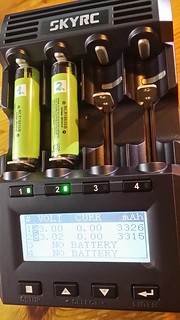
,
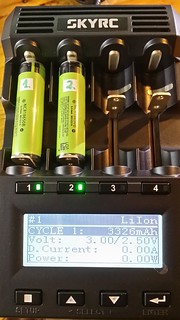
,
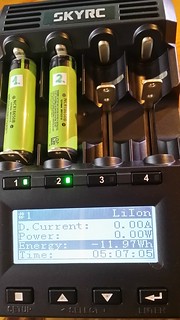
,
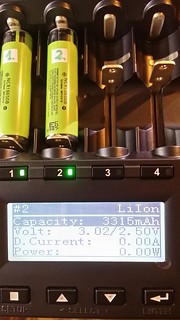
,
